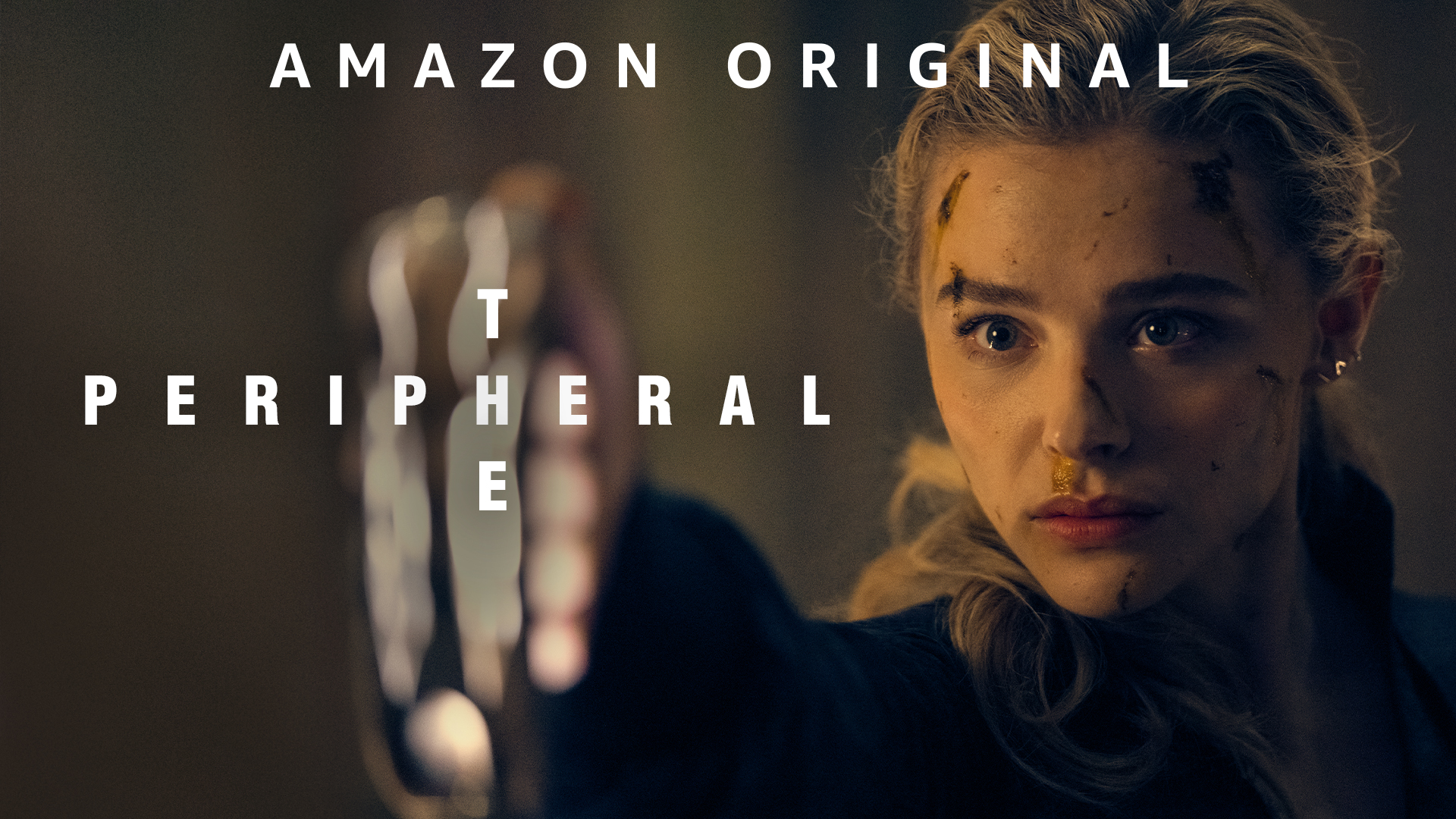Streaming services are desperate to break into the cultural zeitgeist that an instant-classic science fiction or fantasy blockbuster series can provide by reheating existing franchises; look no further than House of the Dragon, Bored of the Rings (I’m sorry, The Rings of Power), or Apple TV’s expensive flop Foundation (though the failure of this show to capture the discourse could be due to the hoops Apple makes people jump through to watch their shows; they really don’t want you unless you have an iPhone…). Amazon Prime should probably be applauded in this market for taking on an original science fiction series, albeit based on William Gibson’s 2014 novel The Peripheral. The show stars Chloë Grace Moretz as Flynne Fisher, a young woman from a rural, near-future America making some pocket money by playing video games, clearly a source of minor income for her, her army veteran brother Burton, and others trying to scrape together a living wage in the gig economy. Flynne realises that the latest ‘game’ she’s been playing is in fact a view into a future London; she is piloting an advanced robot (the titular ‘peripheral’) and her actions have real consequences.
William Gibson is known as the godfather of cyberpunk, giving us the word ‘cyberspace’ in Neuromancer (1984) and taking the reader on a joyride through the neon dataspaces behind the computer screen. Gibson has had dalliances with visual interpretations of his work in the past, working on Robert Longo’s 1995 Johnny Mnemonic (based on a Gibson story of the same name), and trying his hand at screenwriting through two episodes of The X Files, as well as a screenplay for a version of Alien 3 that was never filmed, but has since been made into a comic book and inspired a novelisation by fellow cyberpunk, Pat Cadigan. Now his work seems to be having a moment, as Neuromancer is finally being filmed for Apple TV after being optioned inconsequentially for decades, while The Peripheral is brought to the screen by the team behind HBO’s Westworld and Vincenzo Natali (director of The Cube and Splice).
The early episodes are almost straight from the pages of the novel, with Flynne donning a slick headset in her brother’s run-down trailer. Likewise, the clipped dialogue of the show, giving little away in terms of exposition, will be familiar to Gibson’s readers. Thinking about the show in terms of the body, relationships with technology, and issues of disability is perhaps one way towards thinking about how the show differs from Gibson’s vision, and from the goals of cyberpunk more broadly described. There has long been discussion in interpretations of cyberpunk, and Gibson in particular, about whether Neuromancer and texts like it fantasise about an escape from the ‘meat’ of the human body. I have argued in the first chapter of my book that the body is always a consideration for Gibson, and The Peripheral in particular foregrounds the body and human fleshly interdependence with the environment. The skin of Burton and his veteran friends is laced with ‘haptics’, a technology that allows them to be remote-controlled like human drones in the novel and that, in the TV series, makes them interconnected, able to channel each other’s pain and experiences.
The issue of disability is brought to the fore through Conner, one of Burton’s army mates and a triple amputee. In Flynne’s timeline he drives a buggy that gives him access to most environments, but he doesn’t hesitate when given the option to experience full-body sensation by piloting a peripheral. The TV version seems to have taken this to the next level; it seems that Conner has the option to leave the ‘meat’ behind and stay in the peripheral somehow, and (without giving too much of a spoiler) Flynne puts this to the test at the series’
climax in quite an extreme fashion. In the novel, the body is inescapable though mutable through implanted haptics, animated tattoos, the flaying of healthy skin, and the seasickness that comes with peripheral piloting. Despite this mutability though, the personality and being of a person can never be separated from their body – only information can travel between different timelines, allowing someone to pilot a peripheral else-when, but never to ‘move’ there (or ‘then’) wholesale.
The conclusion of series one leads me to believe that the TV series is taking a different tack, and one that does encourage the transhumanist idea that minds are nothing but data, and can therefore travel anywhere the flow of data allows. The connection to the body is cut. The show takes place against the backdrop of the ‘Jackpot’, a moment in history where the environment is damaged, the kleptocracy grab the assets, and much of the human population dies. The interdependence of bodies and environments that the novel emphasises risks being broken here. While this may lead to more narrative opportunities (there are rumours of a second, and possibly a third series on the cards), this move away from the flesh might leave the characters unmoored, and the philosophical impact of the premise weakened, as characters flit around the timeline, freed from the meat. Like the kleptocracy, who can create peripherals and hire flunkies at a whim, the stakes may be lowered for the show so that engagement with issues like disability, mortality, and existentialism become irrelevant and the impact of the novel risks being reduced to a hall of mirrors where nothing matters, because matter itself is rendered irrelevant.
About the author

Dr Anna McFarlane

